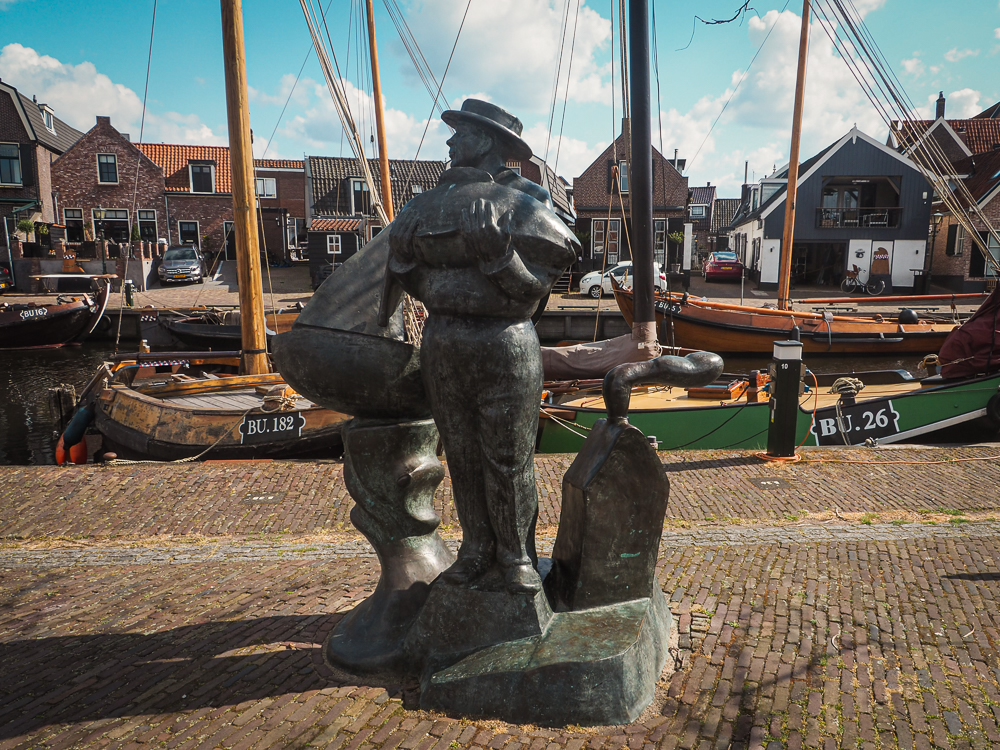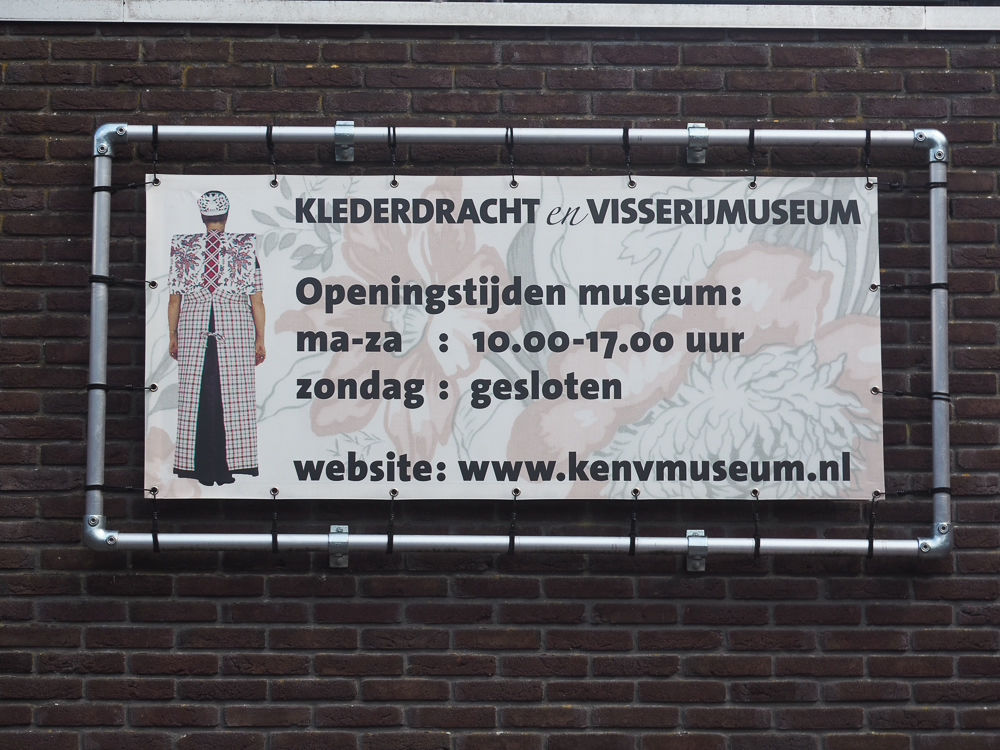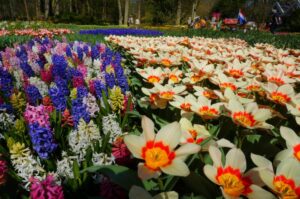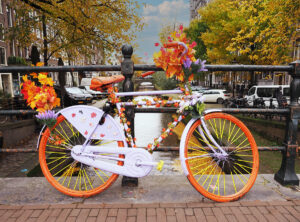You must see Spakenburg. It is one of the nicest fishing villages in the Netherlands. Most of all, I like the antique shipyard and the lively harbor of Spakenburg. Board a traditional sailing ship and sail the former Zuiderzee. This sea, nowadays a lake filled with polders, was once wild and fierce. The waters almost washed away Spakenburg in 1916, when an unleashed sea threw the fishing boats out of the harbor against the houses. The water rose a meter high in the church back then, and 51 people drowned. Today, in 2025, I feel utterly safe and relaxed on my terrace along the harbor. Enjoy a coffee and a piece of Spakenburg cake while watching the sailing ships maneuvering past each other on their way to the lake through the narrow fairway towards the harbor entrance. Meet the offspring of the heroic Spakenburg Fishermen at Eelthe Spakenburg Days, the World Championships Eel Smoking, the Weekly Market, the Events on the Dike, and the concerts in the Harbor.

Must-See in Spakenburg
The Week Market
Each Saturday at 10.00 am, the Week Market starts. Ik you want to pick a day to visit Spakenburg the Saturday is a very good choice. On the market, you will meet the wonderful outgoing people of Spakenburg. The market offers the finest fried fish available in the Netherlands. An irresistible dish you eat with your hands as fishermen do.

The Spakenburg Days
The Spakenburg Days are an annual event, each Wednesday between mid-July and mid-August. A locally colored festival with a grand fair, an extended market, demonstrations of old crafts, on-stage traditional costume presentations, local musicians, and shanty choirs.

Sailing Race with an ancient fishing vessel
The annual “Botter race ” in the last weekend of May: a competition with traditional sailing boats, the so-called “Botters”. In the village center, you find a shipyard where these antique fishing boats are maintained and newly built.
Spakenburg Fishing Days
A Traditional Event in the first weekend of September, when Horses pull fishing boats up the slipway of the shipyard.
Do take a trip on a traditional fishing boat. During the Fishing Days, you are allowed to look inside the museum harbor and go on board rigged fishing boats. Here, families with children in traditional costumes fry crispy fish (plaice) on the botters. You eat the fish with your hands without cutlery. That’s how they do it in Spakenburg.

Eel smoking competition
An annual recurring event in mid-September. In Spakenburg, eel smoking is an old craft. Also, thanks to the growing interest in the culture and past of this fishing village, there is an increasing interest in eel smoking. During this competition, teams compete for the Zuyderzee Cup.
Spakenburg is the place to be when you want to eat fish and hang around an ancient harbor. Moreover, there are unique things to do in Spakenburg and great things to see.

Spakenburg Museum Port
The Museum Port is in the heart of the village center. At the shipyard, the descendants of the local fishermen preserve the historical heritage of the village community. Here, the people of Spakenburg restore and build the traditional fishing vessels of yesteryear in their old shipyard. The museum shipyard is still a boatyard. It was the place where the Nieuwboer Family developed and modernized the traditional fishing boat. This family designed and perfected the Spakenburg ship model.

Botter Shipyard of Spakenburg
At the shipyard, the molds of the old Spakenburg ship design arte are still in use. The Bouter is the most famous ship of the old Zuiderzee, praised by many for its sturdy, flowing lines and its excellent seaworthiness and sailing characteristics for the Zuiderzee. In the past, two botters fished from one net. This could cause difficulties because, in bad weather, a boat built in Spakenburg could stay at sea much longer than boats built in other fishing villages. Back then, when Spakenburg was still on the seacoast, there were more than 200 botters in maintenance at the shipyard. A grand fleet of fishing ships (botters) sailed the treacherous Zuiderzee. Today, it is all different because the Zuiderzee is crossed by dikes and largely transformed into polders. The closure of the Zuiderzee by a dike (the Afsluitdijk) changed life in the fishing village of Spakenburg completely. The fishermen had to switch to other work. Fishing had insufficient means of subsistence. People went to work in factories, but fish also remained important for Spakenburg. You can still see that there are many fish processing companies in the village.

Shipwrecks of Spakenburg
Just outside the harbor entrance of Spakenburg, on the starboard side, lie the shipwrecks of Spakenburg. Since the 19th century, it was customary for ships that were no longer seaworthy to be sailed onto the coast here. Some wrecks have been there for more than 150 years. Most wrecks are of the Botter-type. When you go to the location, it is questionable whether you can see the shipwrecks. The water level is often too high, and the shipwrecks are underwater. But in the middle of a dry summer, you can see the ship’s trusses sticking out of the water.

Traditional costume of Spakenburg
Until the closure of the Zuiderzee with a dike, the village of Spakenburg was rather isolated. Residents lived in a small area where the sea, the community, and the family took a central position. This isolation was further reinforced because normally, the polders around the village were flooded in the winter. People could not leave for a whole winter. From this isolated position, a unique Spakenburg culture developed.

The Spakenburg Costume is a striking example of this. Nowadays, the Spakenburg costume has unfortunately fallen into disuse and is more or less a tourist attraction. The “kraplap” of the Spakenburg costume, as it can still be seen on markets, appeals to the imagination with the fantastic colorful embroidery and because it flares out over the shoulders. Originally, the “kraplap” was intended, as part of the costume, to cover the cleavage. In the book “Between The Sea and The Sky,” you get an awesome impression of worldwide traditional costumes.

More things to do in Spakenburg
- Visit the Historical Fish Auction: hundreds of sailing fishing ships once offered fish here.
- Grinding Mill “De Hoop” operates on Wednesdays and Saturdays. Make a tour around the mill. In the shop, you can buy products from the mill.
- Visit the Spakenburg Museum, located next to the Harbor. There is an indoor and an outdoor museum. The place looks tiny, but it is bigger than you expect. Here you get a lot of information about the history of Spakenburg, the rich fishing past, and the local costumes using objects, films, and photos

Where to sleep and eat in Spakenburg
Why not sleep in nature on the lakeside in a sturdy tent with all comforts at Jachthaven Nijboer? Or stay at an apartment with your own kitchen and stay at the Bourgondic Lilly. Or stay at the B&B, The New Harbor in the center of the village of Spakenburg, and enjoy the best continental breakfast ever.
Being in Spakenburg on a Saturday, you eat fish at the market. Dutch Herring is one of the most popular snacks. If you want haute cuisine, you go to the restaurant “Spui76” and order an eight-course menu or a fish dish at the chef’s table. The restaurant “Smokehouse” serves a great Spakenburg Fish Salad.












Leave A Reply